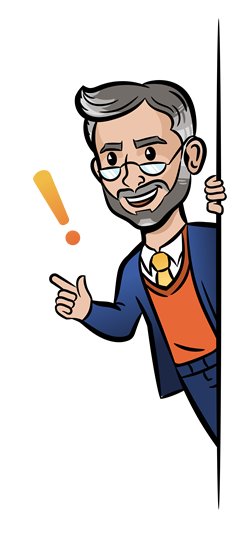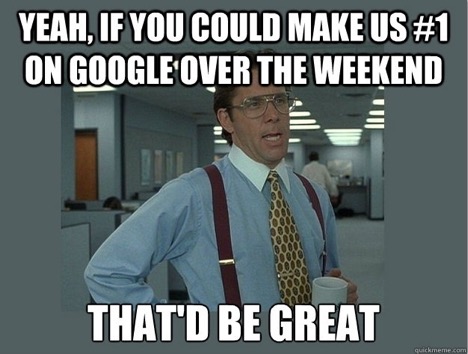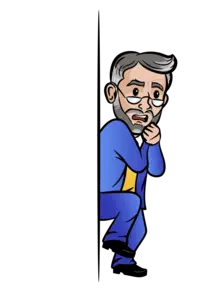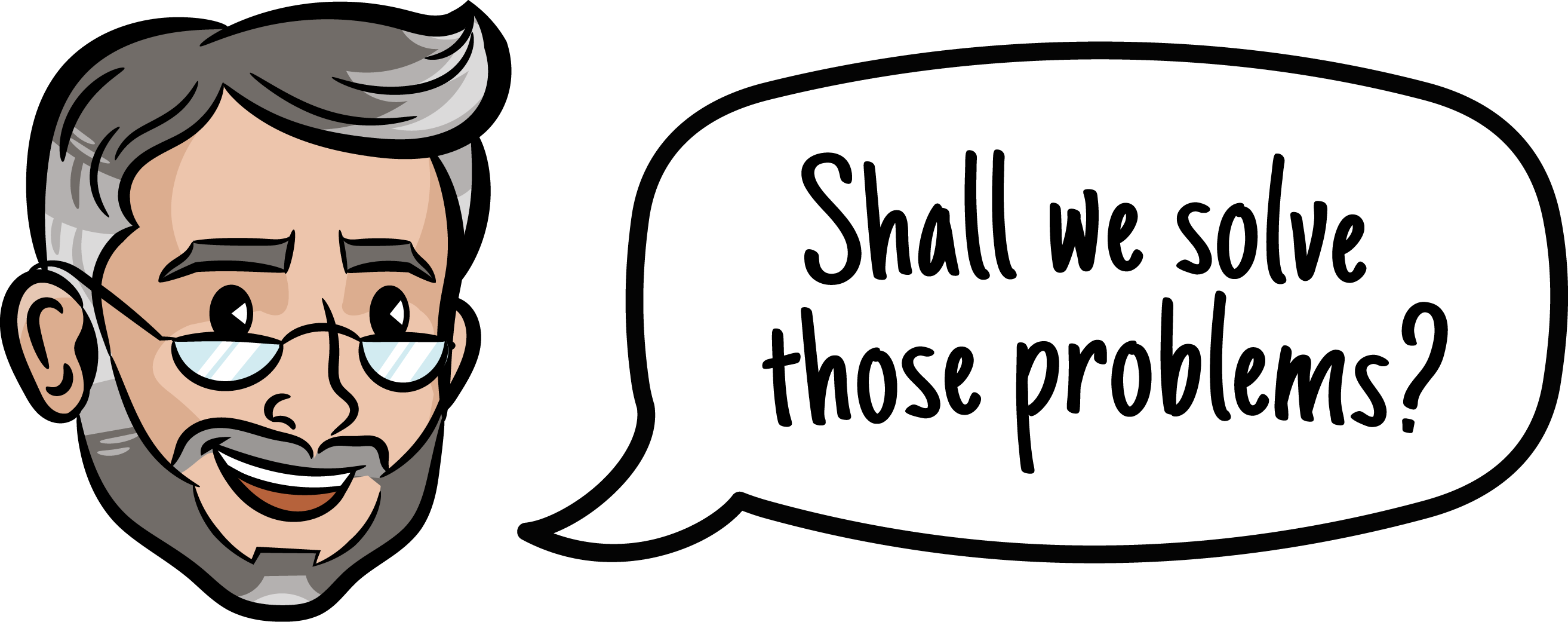With the world becoming even more digital everyday, getting your business showing as a potential solution to a problem or the answer to a question is called search engine optimization, often referred to as simply “SEO.” We will outline why SEO is a top of funnel strategy to master. Relying on a ‘one and done‘ approach in sales and marketing can be a costly mistake, as it often overlooks the importance of nurturing long-term customer relationships.
And unfortunately, you won’t feel any benefit in terms of new client leads unless you’re in the top 10 or “first page” results. Being in the top three results is even better.
Getting a page to be returned in these results requires an SEO strategy and the right professionals to execute it over a period of months. Without this, businesses can end up with Closed-Lost leads—potential clients who showed interest but slipped away due to a lack of visibility or information at the right time.

Professor’s Note
SEO Takes Time.
A good sales funnel consultant knows that SEO is not appropriate as a standalone source of business for brand new businesses or companies that need customers immediately.
It generally takes at least 2 months to have some ROI if the circumstances are right and much longer in more competitive niches.
PPC is generally the fastest go-to-market strategy to get actual purchases made but you’re always paying for those clicks. Like SEO, with the right PPC intelligence in place, you can get a very good idea of what phrases your prospects who become buyers use to describe your product or service.
In this article, we’ll unravel the mysteries of SEO and show you how it can not only elevate your online presence, but also become a primary driver of revenue.
Are you ready to unlock the power of SEO?

Unlock the Power of SEO: What Is SEO?
SEO, or Search Engine Optimization, is the dynamic art and science of improving a website’s visibility in search engine results. The ultimate goal of SEO is to increase organic, non-paid traffic to a website as a top-of-funnel source of strangers who ideally should be good prospects.
Why is this traffic so valuable? Because it often represents users actively searching for specific information, products, or services – in other words, potential customers already expressing interest or showing “purchase intent.”
What Are Other Names for It?
While SEO is the standard abbreviation, you’ll sometimes hear it referred to as “Organic.”
The digital marketing landscape has other terms in it’s lexicon, such as Search Engine Marketing (SEM) and Search Engine Ranking (SER).
SEM can encompass paid search advertising, whereas SEO is the organic counterpart, focusing on unpaid results.
Who Dominates the Search World?
When it comes to search engines, Google reigns supreme. Having the most popular browser, Chrome, and loads of licensing agreements with hardware manufacturers to make Chrome and Google the default browser and search engine can’t hurt.
And then there’s YouTube, also owned by Google. It’s the world’s most popular video search tool.
So when someone talks about SEO optimization, their primary focus is on Google results.
If you’re interested in getting to the top of Yahoo/Bing or DuckDuckGo as well, your Google optimization efforts, coupled with a strategic “keyword multiplier” approach, will likely get you there.
Who Are Larry Page & Sergey Brin?
Larry Page and Sergey Brin are the founders of Google.
They are the architects of modern search. Their innovative search algorithm changed the way we find information on the internet. Though their algorithm has evolved over time, their initial work laid the foundation for contemporary SEO practices.
The company became a Mega-CAP overtime and in a certain era, spent a lot its profits on “moon shots,” other spin off companies. You’ll find Pixel phones, Fitbit watches, and Nest home thermostats.
They also famously used the term “don’t be evil” as their guiding principal in the early days of the company. They don’t say that anymore.
Unfortunately, (or fortunately) Current CEO Sundar Pichai has not hit on a strong second revenue stream and Google still predominantly makes their money selling ads within other peoples’ content, surfaced in their search results and embedded in news articles.
Unlock the Power of SEO: What Is Page Rank?
PageRank, a pivotal part of Google’s early search engine, was developed by Larry Page and Sergey Brin during their tenure at Stanford University. It assessed the importance of web pages based on the quantity and quality of links pointing to them.
Although Google claims it has moved beyond PageRank, it played a crucial role in shaping the world of SEO, emphasizing the significance of high-quality backlinks today, they still drastically improve search rankings when used correctly.

What Has to Happen for a Site to Get Traffic Organically?
Gaining organic traffic or “winning” at SEO requires a number of factors working together:
Keyword Research
Understanding User Intent
Effective keyword research begins by understanding what your target audience is searching for and their underlying intent. Is it informative content, a product or service, or a local business?
Search Volume and Competition
In the world of SEO, not all keywords are created equal. Some are highly competitive, while others have low search volume. Finding the right balance is crucial.
Long-Tail Keywords
Don’t underestimate the power of long-tail keywords – these are the less competitive keywords that lazy SEO firms will miss.
On-Page SEO
Title Tags and Meta Descriptions
These are your website’s virtual welcome mat. Craft them with care to draw visitors in and provide an accurate summary of your content.
Header Tags
Organize your content effectively with header tags. They enhance both user experience and search engine understanding.
Content Optimization
Ensure your content is informative, well-structured, and incorporates the selected keywords naturally.
Quality Content
Content as a Magnet
High-quality, informative, and engaging content is the heart of SEO. It attracts users and keeps them engaged, which is a crucial signal for search engines.
User Intent
Create content that caters to the specific needs and questions of your target audience. Be the solution they seek. If you’re looking to for another great CMO interview questions, “What search phrases would indicate intent for our product?” is a great one.

Horror Story
A seasoned entrepreneur had spent $10,000s on back-linking and content generation to get traffic to his site organically. He gave up on SEO as a top-of-funnel source and was solely dependent on PPC for his top-of-funnel.
Then something in Google’s algorithm or Google Ads itself changed, and his acquisition costs soared, putting him on the verge of going bankrupt.
Why couldn’t he run his business off of his SEO traffic? Because his agency didn’t understand the difference between awareness and intent.
He was a residential synthetic turf installer and his high-priced SEO agency had done all their work on ranking for things like “top 10 golf courses in [city].” rather than variations of “replace grass with turf [city].”
The first search phrase is someone who at some point in their lives might consider installing their own putting green and choose to do it with turf. The second person is in the buying cycle today!
A fractional SEO consultant can easily diagnosis strategic problems like this and help junior agencies or internal resources get back on track.
Link Building
Inbound Links
Building a robust back-link profile involves acquiring quality inbound links from reputable websites. This not only enhances your site’s authority but also provides avenues for traffic.
Crosslinking
If your own pages don’t link to their new siblings, Google assumes you don’t think they’re important and will not even index them in the first place.

Professor’s Note:
Google Search Console is a free service that tells which pages of your site it is aware of.
Of those, it tells you which ones it has crawled.
Of those, it tells you which ones it has indexed.
Only your indexed pages can appear in search results, so be sure you help Google understand what pages are important to your audience.
If you see lots of clicks on in Google Search Console on phrases that have intent, AND you don’t see that you’re getting any actual inquiries, you need a CRO expert to help you with “getting conversions.”
Mobile Optimization
Responsive Design
With the proliferation of mobile devices, your website must be mobile-friendly. Search engines prioritize mobile-responsive sites, meaning the visual elements adjust, typically to a single vertical column, so that the site can still be useful and understood on a phone.
Quick Loading
Faster loading times equate to a better user experience and, consequently, better search engine rankings. Since mobile devices are often using cell signals, which are not as strong, especially in emerging countries, modern sites are expected to be very lightweight.
Technical SEO
Automated Sitemap
Google has spiders running at all times and they will eventually discover a new page of another linked page links to it. But you want Google to crawl your page immediately, so integrating a sitemap and syncing it with Google Search Console will put that process on autopilot.
Crawlability
Are your pages linked in a logical, hierarchical order? Google wants to understand how one page relates to another within content clusters.
Secure Links
Modern sites should use SSL for the protection of visitors. If your site is running SSL (starts with https, not http) but links to pages with http, that needs to be corrected.
Not Full of Spam Pages or Comments
Casual webmasters may not even realize that their sites have been hacked. Not updating plugins in WordPress is a common reason. If your site has become a “link farm” for crypto, porn, dark web, casinos or other nefarious enterprises, your SEO will be negatively impacted.
User Experience
Most modern websites run multiple Google scripts such as Analytics and Google Ads, so when Google’s search engine sends a visitor, Google knows that the visitor either stayed around and read a number of pages or immediately left. Too much of the latter and your site will be penalized.
How Do Businesses Make Money from SEO?
SEO is a top-of-funnel source.
Unlike ABM as a top-of-funnel source, it has no scheduling constraints.
Unlike PPC, once you get a page to rank, you don’t pay to keep it there unless you have a ton of competitors trying to displace you.
So your investment in SEO is research, writing high quality content, and backlinking and crosslinking.
The ROI is sales you close that you can trace back to an organic search term.
Modern CRMs such as HubSpot when configured correctly will show a contact’s “Original Source” as “Organic Search” and sometimes are able to surface the search term as well.
So basically, if you sum all of your SEO investment, you can come up with the number of sales you need to break even and then be profitable, and if you’re lucky, really profitable!
What Are Common Problems that Cause “Not Working” SEO?

Professor’s Note:
A professional WordPress builder (agency owner) decided “SEO is dead” and didn’t even pay it lip service when he put together his go-to-market plan for his all-types-of-digital-content marketplace in late 2022.
If he had done some basic key phrase search frequency, he would have quickly come to realize that demand for his solution was not there (because the pain point he felt was not commonly felt or understood). He assumed the demand and put all of his GTM in outbound thinking that everyone would think his platform was as cool as he did.
They didn’t and he couldn’t raise capital because he got no traction.
Had he done his research, he could have refined his product early on and had a reliable stream of users flowing in by the time he finished his BETA.
The company no longer exists.
There are tons of freelancers and agencies that understand pieces of SEO but not how to fit them all together.
Anyone can go find backlinks. Finding them en masse and quickly is more challenging.
Anyone can write a blog and probably learn how to optimize it.
Fact: these people that like to write hate to go find backlinks.
Do either of those people no how to select target phrases that a particular website can feasibly rank for in a reasonable amount of time and make money for said ranking? Not likely.
Sales people are great at coming up with lists of potential keywords because they have strong empathy. You then need an analytical person to go through each of the phrases with an eye towards volume and competition level and pick where a company can win based on its current profile.
When it comes to bank marketing, front-line branch staff have the most experience with the voice of the customer and can be a valuable resource in identifying keywords.
If all of the above is working correctly and the page that ranks is actually terrible at communicating with a stranger (bad Conversion Rate Optimization), they won’t take the next step so no money will be made!
To gain deeper insights into user behavior at each stage of your sales funnel, consider using tools like Hot Jar, which can help identify where prospects might be dropping off and provide data to refine the funnel for better conversion rates.
So basically, think of SEO as trying to build a race-car. If any one of the engine, driver, fuel, tires, breaks, and many other pieces aren’t pulling their weight, the car may not even move and certainly won’t win against serious competition.

Professor’s Note
A misdiagnosed sales funnel.
When a website is actually poorly written/designed it undermines the business’s credibility, it can make any top-of-funnel source look like it’s failing.
Learn more: How a Broken Sales Funnel Gets Misdiagnosed
Unlock the Power of SEO: Conclusion
In conclusion, any business that intends to be around for a long time should develop an SEO strategy.
Only the most competitive niches in the world require throwing tons of money at SEO in order to succeed: accident attorneys, time shares, etc.
If you’ve “tried SEO” in the past, you likely had at least one bad leg on your stool.

Professor’s Note
Most SEO-initiatives fail for two reasons:
Lack of a well-defined strategy and inadequate understanding of the evolving nature of search engines.
Firstly, without a clear and comprehensive SEO strategy, efforts tend to be uncoordinated and sporadic, failing to target the right keywords, audiences, or align with the overall business objectives. This lack of direction leads to missed opportunities and ineffective use of resources.
Secondly, SEO is an ever-changing field, with search engines constantly updating their algorithms. Many initiatives fail because they do not adapt to these changes, relying on outdated practices that are no longer effective. This includes neglecting the importance of mobile optimization, user experience, and quality content.
But fear not! We diagnose SEO as a top-of-funnel source problems all the time. If you choose SEO as your source for your sales funnel audit, we’ll be happy to explain your current reality and how to fix it.
If you want us to manage your SEO to success as part of your revenue leadership team, our fractional CMO services may be the perfect fit. Learn how the Sales Funnel Professor can help you with your ABM funnel.
Further Reading: Top of Funnel in Focus: Pay per Click – Raise Your PPC Intelligence | Top of Funnel: Organic Social Strategies | What Is the Touch-1 Test in Conversion Rate Optimization? | Top of Funnel: Organic Social Strategies, What is hotjar? and Is a Fractional SEO Consultant the Right Choice for You?


